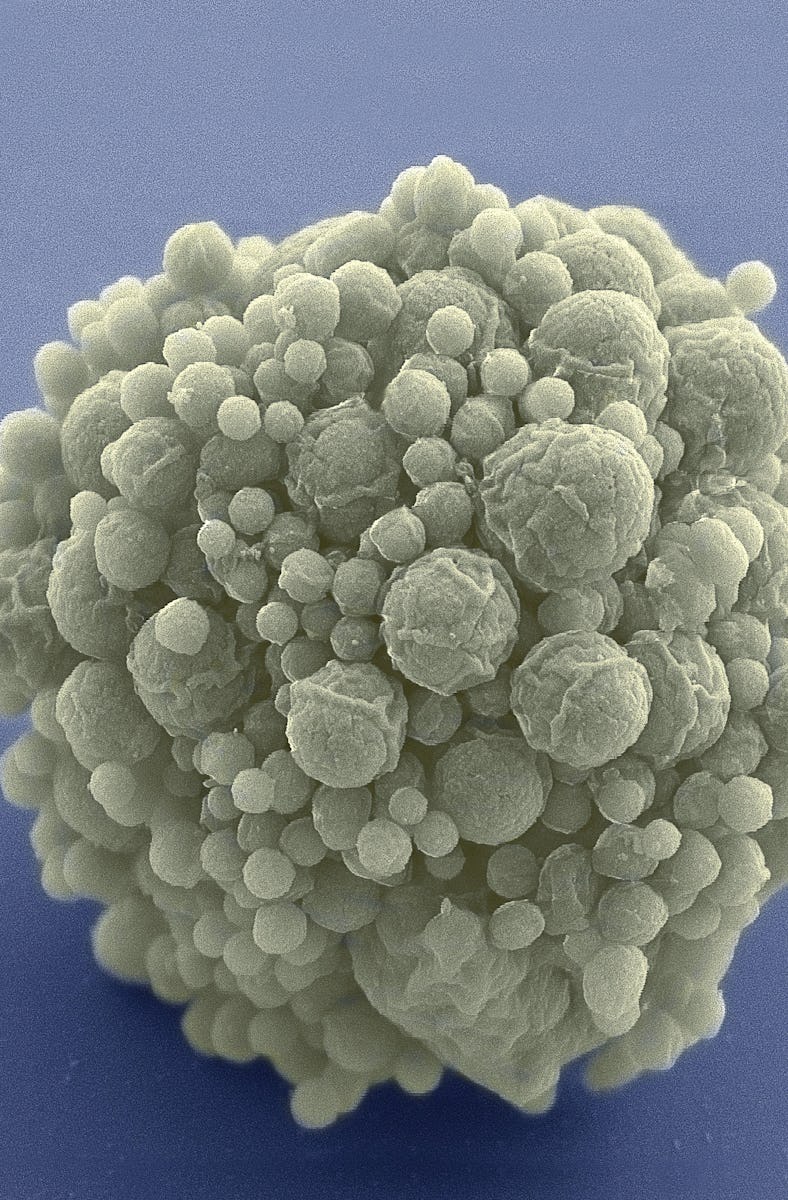Scientists Just Created Artificial Cells That Evolve Faster Than Natural Ones
Life finds a way, even when not dealt a full hand of genetic cards.

The Book of Life — a.k.a. the genome — is pretty darn long. Whether we’re talking about bacteria like Escherichia coli with 4.6 million base pairs or the Australian lungfish punching in at a cool 43 billion base pairs (14 times larger than the human genome), the number of genetic instructions determines the characteristics and function of a living organism.
But do genomes have to be so long? Nature is known to program redundancy to help an organism cope with environmental stress or to offset harmful mutations. What if you stripped down a genome to its barest essential genes — what would happen? Turns out, life would still find a way to survive and thrive, even evolve despite being dealt less than a full hand of genetic cards.
In a study published Wednesday in the journal Nature, an Indiana University and J. Craig Venter Institute-led team created a “minimal cell” from a bacterium called Mycoplasma mycoides, containing only about 493 genes, the smallest genome of any known free-living organism. These minimal cells were able to evolve and grow in number, regaining genetic fitness lost when downsizing their genomes.
“It appears there’s something about life that’s really robust,” Jay T. Lennon, the paper’s senior author and a professor of biology at Indiana University Bloomington, said in a press release. “We can simplify it down to just the bare essentials, but that doesn’t stop evolution from going to work.”
Mycoplasma mycoides is a bacterium behind contagious bovine pleuropneumonia, or “lung sickness,” that lives in the guts of ruminants like cows and goats. In 2016, J. Craig Venter Institute researchers pared down M. mycoides’s genome from 901 genes to 493 genes, creating a new synthetic strain of the bacterium dubbed JCVI-syn3B.
The bacteria in this study typically infect cows.
In the new study, Lennon and his colleagues wanted to see how the minimal cell would respond when placed in an inhospitable lab environment. They knew the cells could multiply in number, as bacteria are wont to do. But with a streamlined genome, would the minimal cells still need to mutate? If so, would these mutations benefit or hinder the genetically modified bacterium's survivability?
“Every single gene in [M. mycoides JCVI-syn3B’s] genome is essential,” said Lennon. “One could hypothesize that there is no wiggle room for mutations, which could constrain its potential to evolve.”
The researchers found that even with the most skeletal of genomes, M. mycoides demonstrated an exceptionally high mutation rate over the 300 days it was allowed to freely grow in the lab, equivalent to 40,000 years of human evolution.
When placed in test tubes with limited nutritional resources (the inhospitable environment) alongside another strain of minimal cells that weren’t given the 300 days to grow and regular M. mycoides with untampered genomes, the minimal cells came out second place. What appeared to give the minimal cells a survival advantage was having those 300 days, which the scientists found helped the bacterium regain the 50 percent drop in fitness it initially experienced when stripping down its genome. These cells even evolved 39 percent faster than their untampered counterparts.
While the full ins and outs of how these mutations improve the fitness of minimal cells are unclear, the hope is this study and others like it will help us to better understand how to successfully engineer synthetic cells, maybe even usher in an age of synthetic life.
This article was originally published on